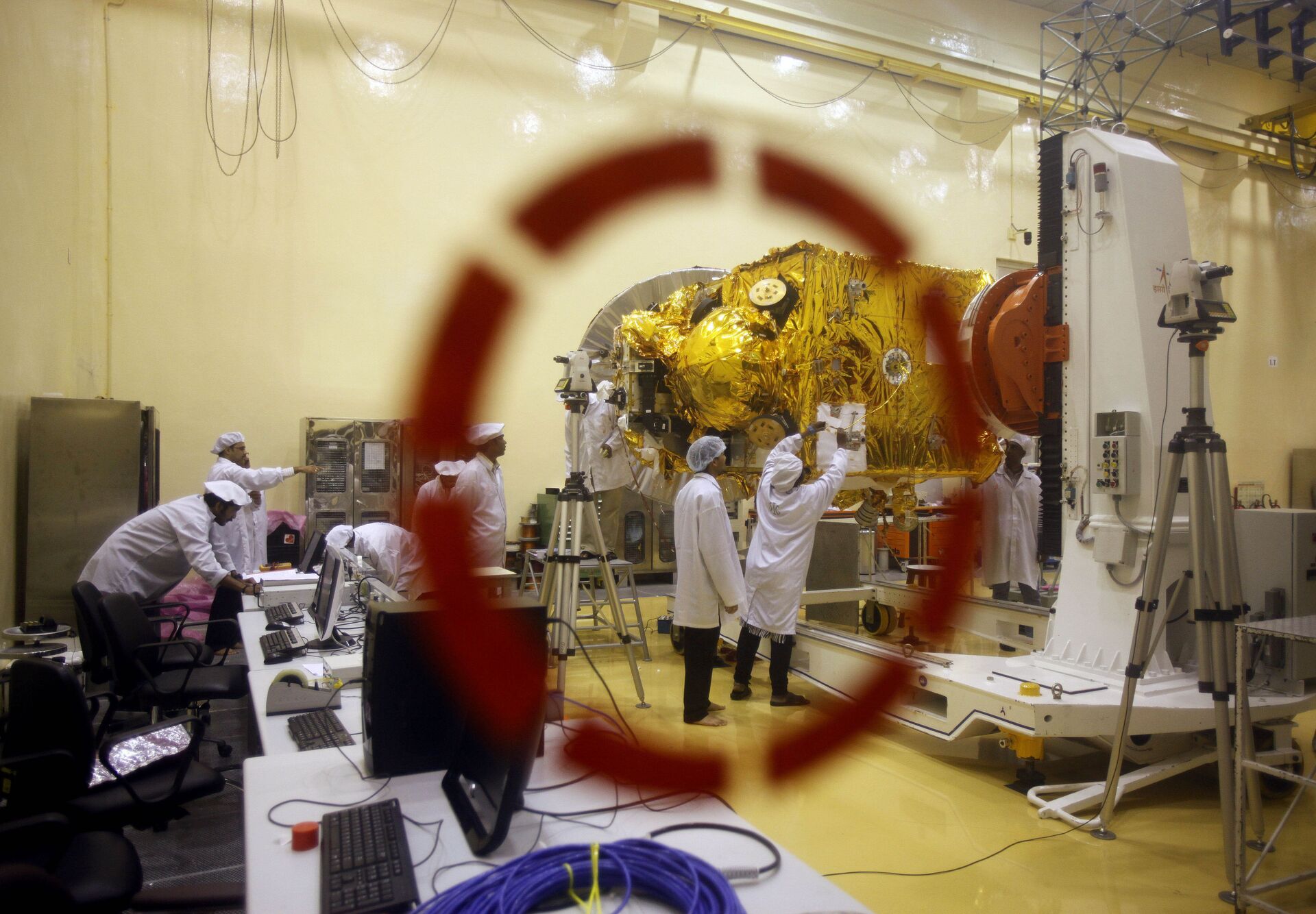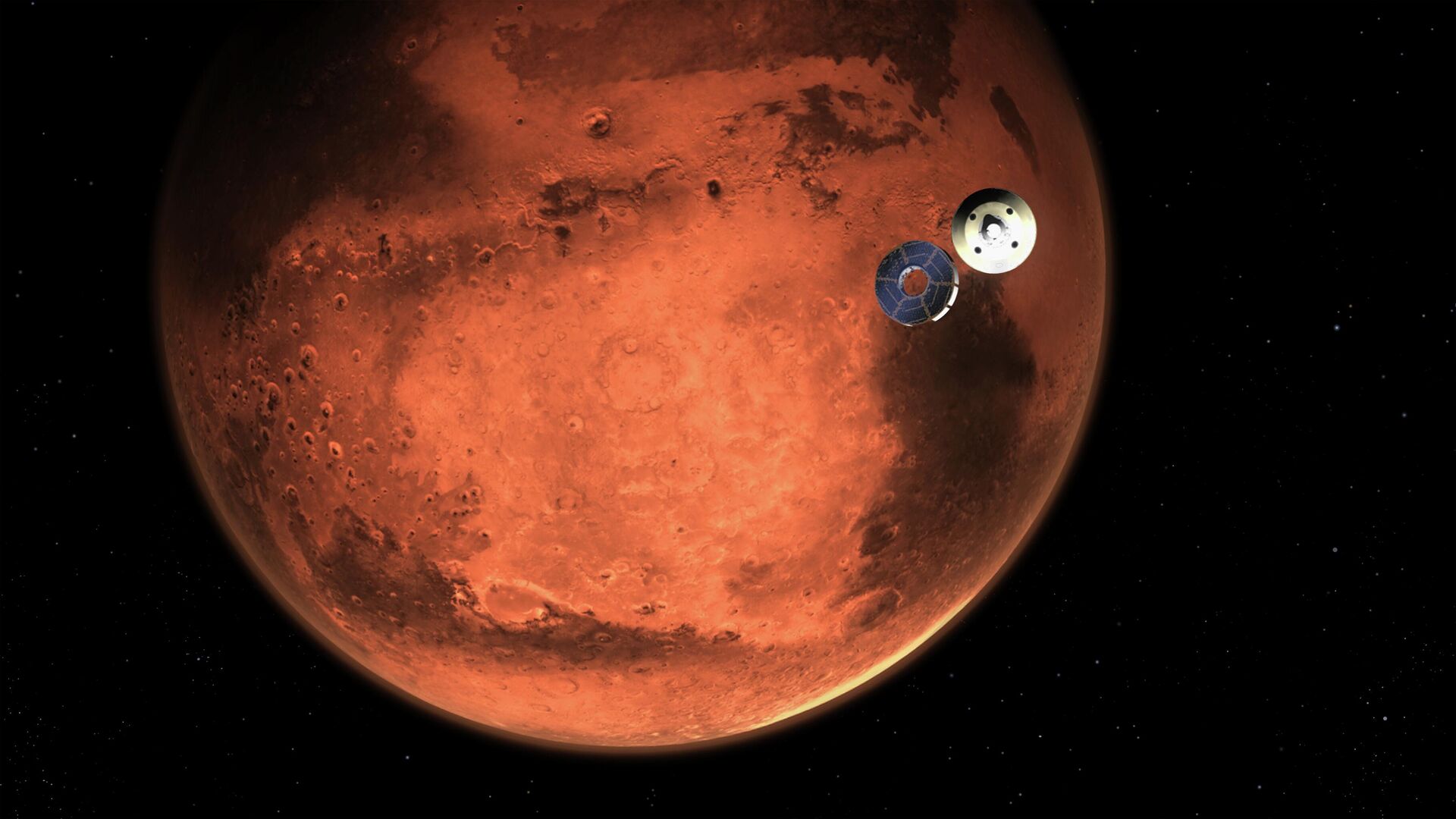https://sputniknews.in/20231005/what-is-indias-mars-2-mission-4599983.html
What is India’s Mars-2 Mission?
What is India’s Mars-2 Mission?
Sputnik India
On 24 September 2014, India entered the Mars Orbiter Mission (MOM) or Mangalyaan into orbit around red planet. Recently, India announced its second mission to... 05.10.2023, Sputnik India
2023-10-05T13:44+0530
2023-10-05T13:44+0530
2023-10-05T13:44+0530
science & tech
polar satellite launch vehicle (pslv)
hollywood
indian space research organisation (isro)
nasa
mars
india
russia
science & tech
space satellite
https://cdn1.img.sputniknews.in/img/07e7/08/0a/3526332_0:565:1551:1437_1920x0_80_0_0_c1a550361dbfc6e7b0bc92401454e937.jpg
The Indian Space Research Organisation (ISRO) has announced that it will be launching Mission Mars-2 (also known as Mangalyaan-2), the second interplanetary mission of India to Mars, Indian media reported.The Mangalyaan-2 mission will study the atmosphere and climate and ascertain if life is possible on the red planet. However, the spacecraft won’t be landing on Mars, media reports suggested.As per media reports, Mars Orbiter Mission-2 (MOM-2) will carry four payloads and be launched by a GSLV MK III rocket.All payloads will contain scientific instruments that will study aspects of the barren planet, including interplanetary dust, the Martian atmosphere, and the environment.What Will Mangalyaan-2 Consist of?The payload will include a Mars Orbit Dust Experiment (MODEX), a Radio Occultation (RO) experiment, an Energetic Ion Spectrometer (EIS), and a Langmuir Probe and Electric Field Experiment (LPEX).What is India’s Mission to Mars All About?On 24 September 2014, India became the fourth nation to successfully enter into Mars orbit after Russia’s Roscosmos, the US' NASA, and the European Space Agency. With its tryst, India also became the first country to successfully orbit the red planet on the first attempt.MOM was launched on board a PSLV-XL on 5 November 2013. After a 298-day transit, it was put into Mars orbit on 24 September 2014.As per the Indian Space Agency, the objectives of this mission were: “technological and include design, realisation and launch of a Mars Orbiter spacecraft capable of operating with sufficient autonomy during the journey phase; Mars orbit insertion / capture and in-orbit phase around Mars”.Additionally, it also took some of the most stunning pictures of the red planet to date.Interestingly, the cost of the mission was as low as INR 4.5 billion (approx. $73 million), less than the budget of the Hollywood movie The Martian (2015).The mission was originally planned for six months, until March 2015, however, it stayed in touch with Earth until 2022. In April 2022, communications were lost, possibly due to an exhaustion of fuel resources.
https://sputniknews.in/20231001/space-cooperation-between-india-and-russia-4504446.html
mars
india
russia
Sputnik India
feedback.hindi@sputniknews.com
+74956456601
MIA „Rossiya Segodnya“
2023
Deexa Khanduri
https://cdn1.img.sputniknews.in/img/07e6/0c/13/138923_52:0:533:481_100x100_80_0_0_cadf23d341691fc65ff2b22fd1afe584.jpg
Deexa Khanduri
https://cdn1.img.sputniknews.in/img/07e6/0c/13/138923_52:0:533:481_100x100_80_0_0_cadf23d341691fc65ff2b22fd1afe584.jpg
News
en_IN
Sputnik India
feedback.hindi@sputniknews.com
+74956456601
MIA „Rossiya Segodnya“
Sputnik India
feedback.hindi@sputniknews.com
+74956456601
MIA „Rossiya Segodnya“
Deexa Khanduri
https://cdn1.img.sputniknews.in/img/07e6/0c/13/138923_52:0:533:481_100x100_80_0_0_cadf23d341691fc65ff2b22fd1afe584.jpg
mission mars, manglayaan mission 2, mission mars-2, mars orbiter mission-2, mom-2, mars orbit dust experiment, modex, radio occultation, ro experiment, energetic ion spectrometer, eis, langmuir probe and electric field experiment, lpex, what is mangalyaan, was mom mission a success, who will go to mars in 2024, who is going to mars in 2023, is mangalyaan mission a success or failure?, when india will go to mars, can humans live on mars, mission mars movie, mars mission isro, mangalyaan 2 launch date, 5 countries to reach mars, isro mars mission team, when was india’s first mission to mars was launched, mars mission, india, mars mission, successful countries, mangalyaan, mangalyaan mission, mangalyaan movie, mangalyaan 2 mission, mangalyaan, mangalyaan launch date, mangalyaan team, mangalyaan real images, mangalyaan 2 launch date, mangalyaan 1, mars, mars planet, mars in hindi, mars images, james webb space telescope, mars, mars orbiter mission, mars picture, mars mission india, distance between earth and mars, mars temperature, earth to mars distance, mars orbiter mission, isro, life on mars, how many moons does mars have, information about mars, mars distance from earth, mars planet in hindi
mission mars, manglayaan mission 2, mission mars-2, mars orbiter mission-2, mom-2, mars orbit dust experiment, modex, radio occultation, ro experiment, energetic ion spectrometer, eis, langmuir probe and electric field experiment, lpex, what is mangalyaan, was mom mission a success, who will go to mars in 2024, who is going to mars in 2023, is mangalyaan mission a success or failure?, when india will go to mars, can humans live on mars, mission mars movie, mars mission isro, mangalyaan 2 launch date, 5 countries to reach mars, isro mars mission team, when was india’s first mission to mars was launched, mars mission, india, mars mission, successful countries, mangalyaan, mangalyaan mission, mangalyaan movie, mangalyaan 2 mission, mangalyaan, mangalyaan launch date, mangalyaan team, mangalyaan real images, mangalyaan 2 launch date, mangalyaan 1, mars, mars planet, mars in hindi, mars images, james webb space telescope, mars, mars orbiter mission, mars picture, mars mission india, distance between earth and mars, mars temperature, earth to mars distance, mars orbiter mission, isro, life on mars, how many moons does mars have, information about mars, mars distance from earth, mars planet in hindi
What is India’s Mars-2 Mission?
Deexa Khanduri
Sputnik correspondent
On 24 September 2014, India entered the Mars Orbiter Mission (MOM) or Mangalyaan into orbit around red planet. Recently, India announced its second mission to the planet in 2024.
The Indian Space Research Organisation (ISRO) has announced that it will be launching Mission Mars-2 (also known as Mangalyaan-2), the second interplanetary mission of India to Mars, Indian media reported.
The Mangalyaan-2 mission will study the atmosphere and climate and ascertain if life is possible on the red planet. However, the spacecraft won’t be landing on Mars, media reports suggested.
As per media reports,
Mars Orbiter Mission-2 (MOM-2) will carry
four payloads and be launched by a GSLV MK III rocket.All payloads will contain scientific instruments that will study aspects of the barren planet, including interplanetary dust, the Martian atmosphere, and the environment.
What Will Mangalyaan-2 Consist of?
The payload will include a Mars Orbit Dust Experiment (MODEX), a Radio Occultation (RO) experiment, an Energetic Ion Spectrometer (EIS), and a Langmuir Probe and Electric Field Experiment (LPEX).
MODEX: will help understand the origin, abundance, distribution, and
flux at high altitudes on Mars.
Radio Occultation (RO): will measure neutral and electron density profiles. This will be a microwave transmitter operating at X-band frequency that can help understand the behaviour of the Mars atmosphere.
EIS: will help in characterising solar energy and supra-thermal solar wind particles in the Martian environment. The instrument will also aid in our understanding of the red planet's loss of its atmosphere eons ago.
LPEX: will help in
measuring electron number density, electron temperature, and electric field waves, which will help in ascertaining the plasma environment on the planet.
What is India’s Mission to Mars All About?
On 24 September 2014, India became the fourth nation to successfully enter into Mars orbit after
Russia’s Roscosmos, the US' NASA, and the European Space Agency. With its tryst, India also became the first country to successfully orbit the red planet on the first attempt.
MOM was launched on board a
PSLV-XL on 5 November 2013. After a 298-day transit, it was put into Mars orbit on 24 September 2014.
As per the Indian Space Agency, the objectives of this mission were: “technological and include design, realisation and
launch of a Mars Orbiter spacecraft capable of operating with sufficient autonomy during the journey phase; Mars orbit insertion / capture and in-orbit phase around Mars”.
Additionally, it also took some of the most stunning pictures of the red planet to date.
Interestingly, the cost of the mission was as low as INR 4.5 billion (approx. $73 million), less than the budget of the
Hollywood movie
The Martian (2015).
The mission was originally planned for six months, until March 2015, however, it stayed in touch with Earth until 2022. In April 2022, communications were lost,
possibly due to an exhaustion of fuel resources.





